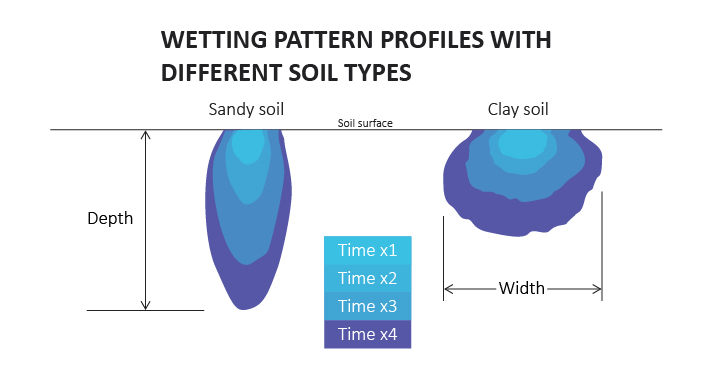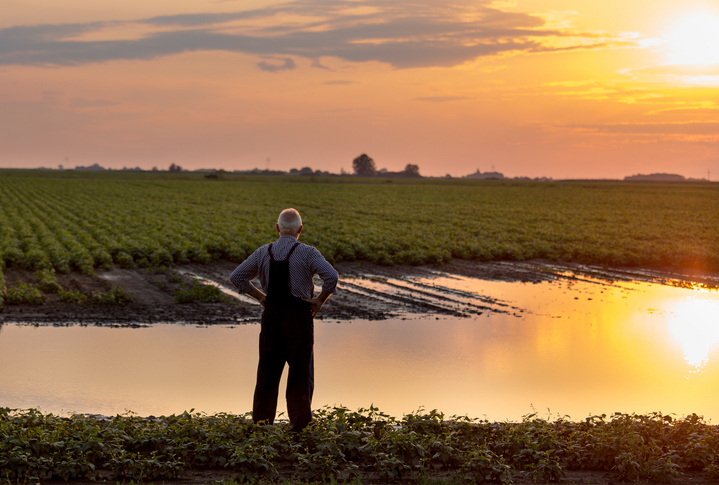Watering plants goes far beyond the surface area around the stems. Water moves through soil — over time. So it’s important to approach irrigation from more than a two-dimensional perspective.
Water movement in soil is crucial for plant growth and health. Understanding this process helps farmers manage irrigation more effectively and ensure optimal plant hydration.
1. Soil Water Movement
Water moves through soil via three primary mechanisms:
- Gravitational Water: This water drains through the soil due to gravity, moving quickly through large soil pores.
- Capillary Water: Held in the soil pores, this water is available for plant uptake. It moves from wetter to drier areas through capillary action.
- Hygroscopic Water: This water forms a thin film around soil particles and is generally unavailable to plants because it’s tightly bound to the particles.
2. Soil Texture and Structure
The texture and structure of the soil significantly affect water movement.
- Sandy Soils: These have large particles and pores, leading to quick drainage but low water retention.
- Clay Soils: With small particles and pores, these soils retain water well but drain slowly.
- Loamy Soils: A balanced mixture of sand, silt, and clay, loamy soils provide optimal water retention and drainage for plant growth

3. Plant Water Uptake
Plants access water primarily through their roots. The root hairs, which are in close contact with soil particles, absorb water and nutrients. Key factors in this process include:
- Osmosis: Water moves from soil (higher water potential) to root cells (lower water potential) through osmosis.
- Transpiration: This process creates a negative pressure in the leaves, pulling water upward from the roots through the plant’s vascular system (xylem).
- Root Architecture: Deeper and more extensive root systems can access water from deeper soil layers, essential during dry periods.
4. Optimizing Irrigation with AgriLynk
AgriLynk’s advanced technology supports optimal water management through:
- Real-Time Soil Moisture Monitoring: Field stations and sensors provide continuous data on soil moisture levels, helping farmers make informed irrigation decisions.
- Actionable Insights: Analyzing real-time data, AgriLynk offers recommendations tailored to specific crops and soil conditions.
- Remote Control: Farmers can adjust irrigation schedules remotely, ensuring precise water application based on current soil moisture levels.
- Scalability: AgriLynk’s system can be easily expanded to accommodate farms of any size, offering flexibility and efficiency.
By understanding how water moves in the soil and how plants access it, farmers can use AgriLynk’s technology to enhance water use efficiency, promote healthy crop growth, and achieve sustainable farming practices.
Reach out to AgriLynk for more information:
Call us: (760) 723-1529
Contact Us

